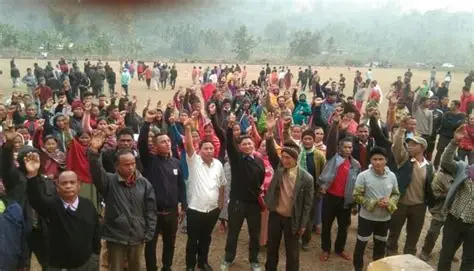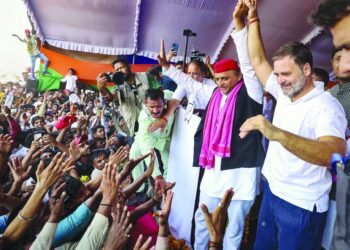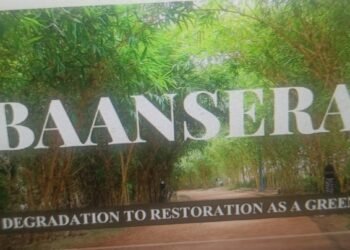At a public meeting in Ukiam, leaders from the Rabha, Garo, and Boro communities vowed to intensify protests against the dam, calling it a project that prioritises profit over people and ignores seismic dangers.
BY PC Bureau
June 29, 2025: Opposition is mounting against the proposed hydroelectric dam on the Kulsi River, as tribal communities living along the Assam-Meghalaya border intensify their resistance to the project. These residents—primarily from the Rabha, Garo, Boro, Marak, and Khasi communities—depend on the river for their livelihoods and fear the dam will bring irreversible harm to their environment, culture, and way of life.
The project, which has received backing from both Assam Chief Minister Himanta Biswa Sarma and Meghalaya Chief Minister Conrad Sangma, is being presented as a clean energy initiative. However, for villagers in the forest-rich region near Ukiam, the project represents a direct threat to their land, homes, and traditional occupations such as farming, fishing, and forest gathering.
On Friday, members of the Assam-Meghalaya Joint Resistance Committee gathered at the community hall in Ukiam to chart the next phase of their protests. The meeting, chaired by well-known activist Rajani Boro, brought together leaders from multiple affected areas and saw a strong turnout from both Assam and Meghalaya. Those present voiced their concerns about the long-term social and ecological consequences of the dam.
READ: Meitei Groups to Urge Peace in Hills at MHA Talks
Maniram Rabha, secretary of the Assam unit of the committee, said the dam could displace entire communities and destroy fragile ecosystems that locals have protected for generations. He added that people are still in the dark about key aspects of the project, and called for an urgent awareness campaign to inform villagers about what lies ahead if the dam goes forward.
Tribals in Lower Assam are now protesting against a dam project by state government that is meant to provide electricity in the region.
They say they won’t allow their forests + wildlife to be destroyed. pic.twitter.com/sWGvyJcqnt
— do’o kappa (@viprabuddhi) June 27, 2025
Speaking at the meeting, Nandalal Rabha criticised elected representatives and warned against relying on political parties to champion the cause. He said only a determined and united grassroots movement could stop the project. He also underscored the deep emotional and cultural ties communities have with the river, which many consider sacred.
Albert Nonglai, who heads the committee’s Meghalaya unit, announced that a formal memorandum would soon be submitted to Chief Minister Conrad Sangma. The memorandum will appeal for the cancellation of the dam and highlight a range of concerns—from potential mass displacement to ecological degradation. One key concern repeatedly raised was the region’s seismic vulnerability. Rajani Boro pointed out that the area sits in an earthquake-prone zone and cited the creation of Chandubi Lake during the great Assam earthquake of 1897 as a historical warning. She argued that large infrastructure projects in such areas could pose grave danger to both people and nature.
READ: Journalists’ Protest Grows in Imphal Amid Official Silence
At the heart of the resistance is the fear that those most affected—small farmers, fisherfolk, and forest dwellers—will be left voiceless. Boro warned that the dam would deliver benefits to outsiders while imposing irreversible losses on the local population. She said the dam was not just an environmental issue, but a social and moral one.
Despite several public meetings and efforts to reach out, residents expressed frustration that no senior government leaders, including Chhaygaon MLA Rekibuddin Ahmed, RHAC Executive Member Tonkeswar Rabha, or Chief Minister Conrad Sangma, have visited the affected areas to hear local concerns.
The meeting concluded with a renewed call for stronger mobilisation, particularly among women and youth. Protest leaders such as Kaifa Rabha, Biswajit Rabha, Jagdish Rabha, Grateful Sonhom, Kumar Marak, and Thiodas Marak resolved to intensify grassroots initiatives and expand the campaign to every impacted village.
As the resistance gains momentum, community members insist that the fight is not against development—but for a model of progress that respects people, land, and the environment.













